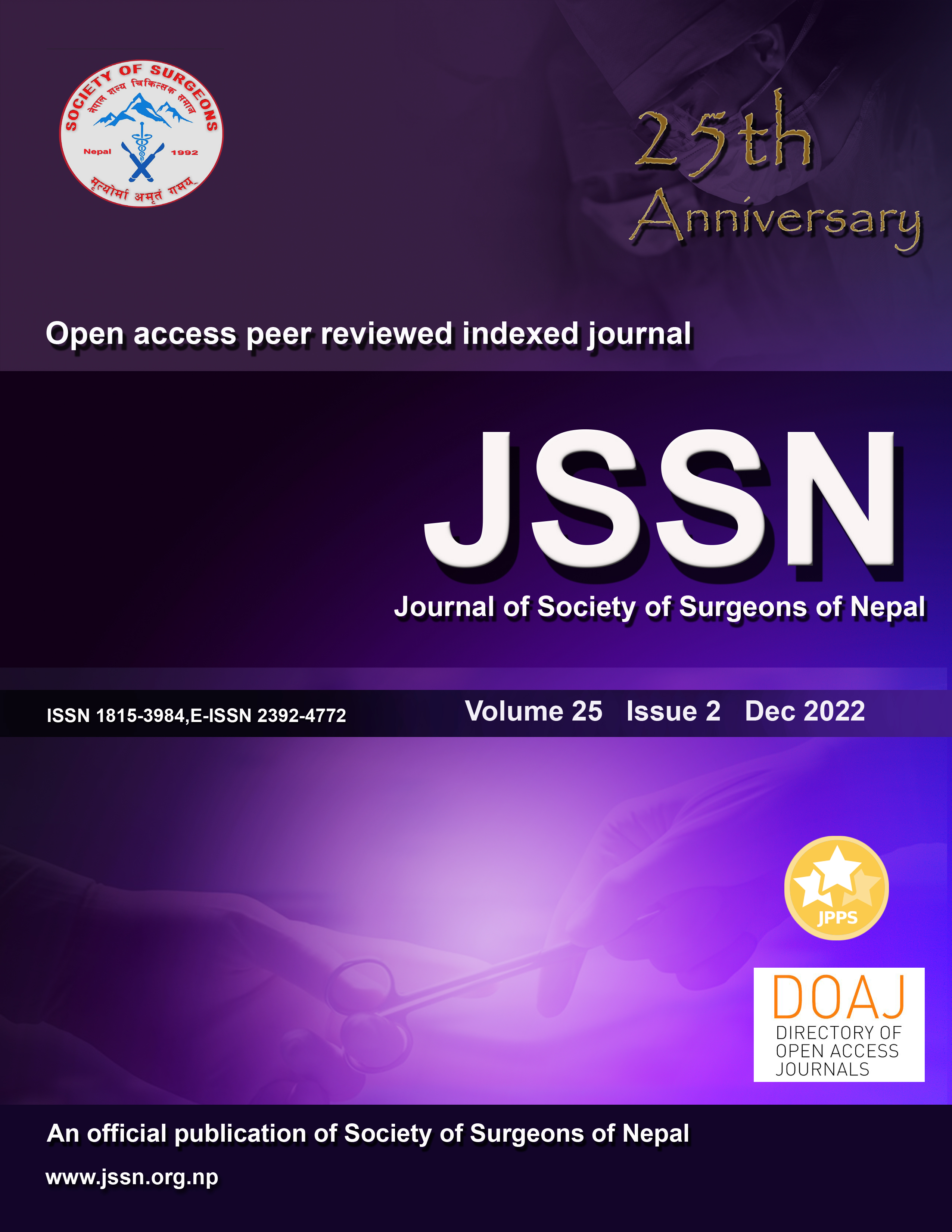Spectrum of Gastrointestinal Perforations in a Tertiary Care Hospital of Central Nepal: An Analytical cross-sectional study.
DOI:
https://doi.org/10.3126/jssn.v25i2.50812Keywords:
Acid peptic disease, Gastrointestinal perforations, Infections, Trauma, MalignancyAbstract
Introduction: Perforations of the gastrointestinal tract are frequently encountered surgical emergencies associated with high morbidity and mortality. This study was conducted to evaluate different spectrum of gastrointestinal tract perforations, their presentations, mode of surgery, complications and factors associated with mortality.
Methods: This was an analytical cross-sectional study conducted in the Surgical Gastroenterology Department at College of Medical Sciences, Bharatpur, Chitwan, Nepal from October 1st 2021 to October 31st 2022. Patients undergoing emergency laparotomy for GI tract perforations were included in this study. Patients demographics, comorbidities, preoperative investigation, site and cause of perforation, type of surgery and postoperative complications were recorded.
Results: A total 100 patients with gastrointestinal perforations were analyzed. The mean age was 46.55 years. Male predominance with M:F=1.56:1 was seen. Almost 54% patients presented after 24 hrs of onset of pain. Peptic ulcer disease as a cause of perforation was seen in 26%, trauma in 23% cases, appendicular perforation in 20%, malignant perforation in 8%, tubercular perforation in 7% and foreign body perforation in 3% cases. Duodenal, appendicular and colorectal perforations were seen in 28%, 20% and 17% cases respectively. Total morbidity was 54% and mortality was 13%. Increasing age, delayed presentation, presence of comorbidities, systolic blood pressure less than 100 mm Hg, oliguria, presence of malignancy were significantly associated with high mortality.
Conclusion: Perforations of duodenum, appendix and colorectum are commonly encountered. Acid peptic disease, trauma and infections are the leading causes of perforations. Increasing age, delay in presentation, comorbidities, oliguria and hypotension are the factors associated with high mortality.
Downloads
Downloads
Published
How to Cite
Issue
Section
License
Copyright (c) 2022 Narayan Prasad Belbase, Sagar Khatiwada, Sushim Bhujel, Ravi Gupta, Hari Prasad Upadhyay, Deepak Belbase

This work is licensed under a Creative Commons Attribution 4.0 International License.
This license enables reusers to distribute, remix, adapt, and build upon the material in any medium or format, so long as attribution is given to the creator. The license allows for commercial use.




